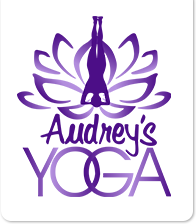Rest & Digest

Welcome to winter! It has been quite a while since I posted a blog, and I apologize for that. One of my resolutions is to be more consistent moving forward.
Recently, I’ve been reflecting on the importance of slowing down during the winter months. This helps us connect with our energy and reminds us that we don’t need to do more during the holiday season. My meditation teacher, Cyndi Lee, recently posted a blog that beautifully captures these sentiments. I’d like to share her words along with her grounding practice. Enjoy!
Hello friends!
As we move deeper into the holiday season and the chilly months of winter here in the northern Hemisphere, our emotional and physical energy banks can become constricted or even backed up. It’s more challenging to find time to move your body in space when your schedule is packed and you have to bundle up in layers of puffiness just to go for a walk.
Now is the right time to call on our Moon Practices!
Moon Practices include Breathwork, Restorative Yoga and Meditation. These practices are all receptive, which in yoga is the opposite of active.
The Moon Practices help turn on our parasympathetic nervous system, which is nicknamed Rest and Digest. The parasympathetic nervous system is close to the inner organs and tells your organs when to relax and quietly do their jobs. The sympathetic nervous system, known as Fight, Flight or Freeze, is connected to the spine and tells you when to move! We need to tone each these systems—the sympathetic and the parasympathic—so that our nervous system can be nimble and go fast or slow, depending on the situation.
This is how we develop resilience in body and mind. Unfortunately, most of us get hyped up around the holiday season. The Moon practices are balms that soothe tension as well as rejuvenate stagnant energy by stimulating the rest and digest response.
Below is one of my Moon favorite practices: Restorative Breathwork.
Breathwork helps you really feel how your wind energy is the bridge between mind and body. Directing your breath with curiosity and specific focus can help remove obstacles to the free flow of all that should move: wind, water, lymph, blood. The inhalation relates to Prana, the forward moving wind, and the exhalation relates to Apana, the downward moving wind. Prana creates uplifted energy and apana enhances elimination, letting go and grounding. Together they provide the experience of being integrated, body, breath and mind. So I offer you a practice of Restorative Breathwork, both written and as a voice recording.
This simple practice will help you become more resilient and nimble through the gateway of your body. Anybody can do this. You can do this! It’s not complicated and you don’t have to be fit or be a yogi or be any way other than how you are right now.
You can do this Restorative Breathwork practice by listening to this recording or using the text below.
Lie down on the floor or on your couch or your bed. If you think you might get cold, you can cover up with a blanket. You can also put a folded blanket or small pillow under your head.
Feel the earth holding you and begin to let your body settle down.
Tune into the feeling of your breath. Natural breath, just as it is.
Don’t make up something else or have an out-of-body experience. Stay right here.
You will see that all your positive thoughts and all your dispositive thoughts come and go.
You will feel all that is moving in your heart—joy and sorrow, pleasure and pain.
Underneath it all is just you, good as you are.
No need to look outside for more, for better, for fancier, for extra-ordinary.
Just stay steady on the earth, with your own wind energy, your own body, heart and mind.
This is always a good start and the best thing ever to give to yourself,
to give to another person, to give to our whole world.
Breath work:
Place your fingertips on your sternum, the bone running down the center of your chest.
You will notice how this place is like a little valley between the two sides of your chest, which rise up slightly like rolling hills.
Tune in to movement of the breath in the two sides of your chest, rising and falling, and at the same time, let the valley of your sternum remain quiet and still.
Little by little, begin to deepen your breathing.
Try to feel the breath moving into the sides of your ribs,see if you can draw in a little bit more breath without grasping, and extend your exhale without pushing it away.
Try to keep your attention on this activity but if your mind strays, no big deal.
Just come back and start again. You can always start again.
Now, place your right hand on your right ribs and feel the breath there.
Extend your right arm out to the side and continue to feel the breath just in your right ribs.
Now make a tight fist with your right hand and lift it off the ground a couple of inches. Breathe into your right ribs and notice how this feels. Is it different? How is it different?
Let go of your fist and relax your arm. How is this different?
Now, place your left hand on your left ribs and feel the breath there.
Extend your left arm out to the side and continue to feel the breath just in your left ribs.
Now make a tight fist with your left hand and lift it off the ground a couple of inches.
Breathe into your left ribs and notice how this feels.
Whatever you notice is fine and interesting.
Relax both arms by your sides. Breathe naturally and see what that’s like right now.
Now roll over to one side and sit up. Take a moment to observe your breathing practice for today.
It is said that the breath is the messenger of the heart.
My hope that if you start to feel tense during this holiday season, you can remember to place your mind on the sensations in your chest and ribs and arms and hands and move the breath gently in and out, tenderly expressing the messages of your heart.
Thank you, Cyndi Lee




